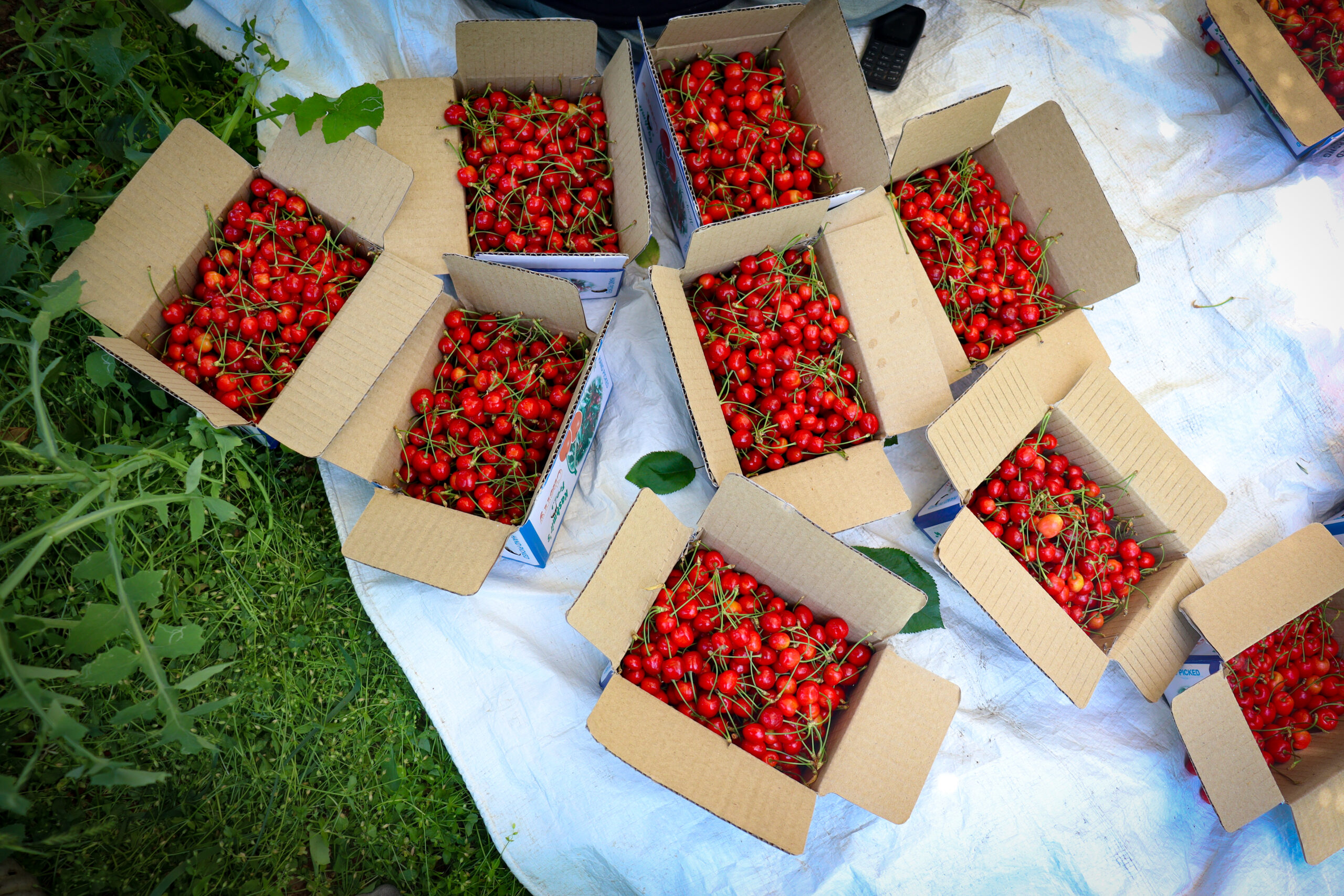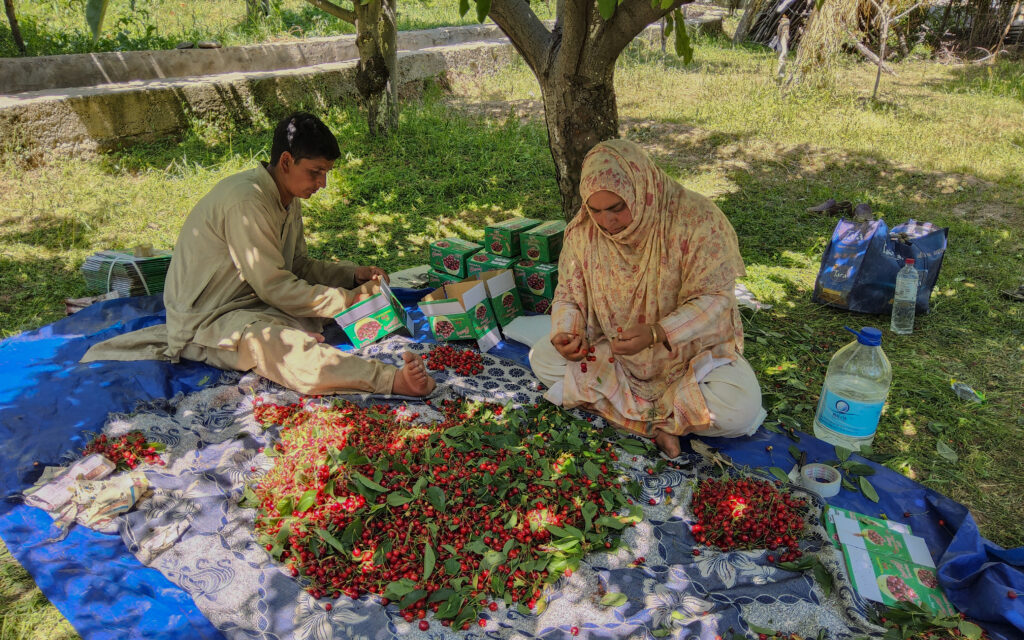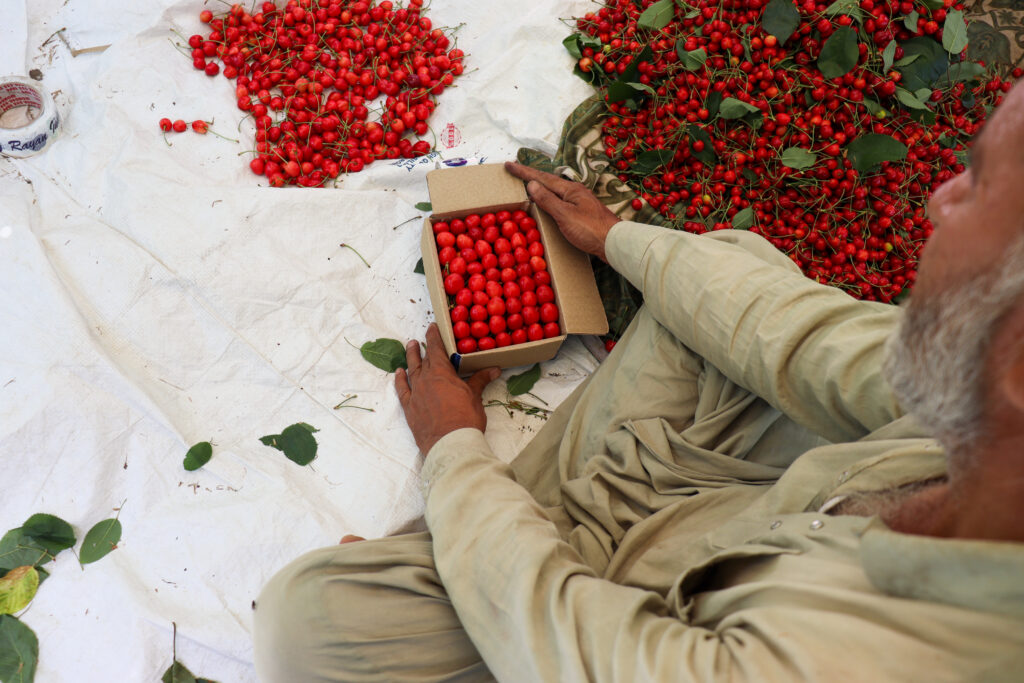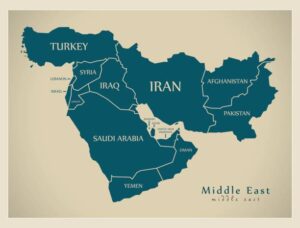Cherry Season in Kashmir Families Harvest, Hope, and Worry Together

By| Mubashir Gulzar
In the cool air of early summer, cherry orchards across Kashmir burst into life. For many families, this short harvest season, from May to June, is the most important time of the year a time of hard work, careful picking, and quiet hope for good returns.
Ab Rather has been working in cherries for nearly 20 years. His family knows the rhythm by heart wake early, head to the trees, and work from morning to evening. “We need many hands during harvest,” he says, looking out at the rows of trees heavy with red fruit. The laborers are paid ₹600 to ₹650 a day, and every evening we take the fruit to the local mandi (market) to sell.
For the Rather family, the cherry season is not just a job, it’s the main way they meet their household needs for the year. “We depend on this,” Rather explains. It’s regular work, but we also depend on the weather. Some years, when the weather changes or storms come, the fruit suffers. The horticulture department gives some help, but honestly, it’s not enough to cover all the damage.
The orchards of Kashmir are dotted with families just like Rather’s, all working together during this intense season. Tariq Ahmad Ganaie, another cherry grower, works with his wife Lovely on their small 1.5 kanal plot. Thanks to Allah, there’s profit in it,” Ganaie says, smiling slightly as he packs cherry boxes. But we pay the laborers ₹700 a day, plus meals and tea. One person is always busy managing the laborers alone.
For Ganaie, owning even a small piece of land gives some protection when prices drop. “If you’re selling from your own orchard, you can bear the loss if profits are low. But people who sell cherries from someone else’s orchard they don’t have that cushion,” he explains.
Each box of cherries sells for anywhere between ₹150 and ₹200, depending on quality. But the work is expensive: sprays and fertilizers alone cost ₹7,000 to ₹8,000 per season. “Cherries need two pesticide sprays,” Ganaie says. Without it, insects ruin the fruit. My wife helps me, and my daughter is studying. We manage, but there’s no real support from the government. The horticulture department says they help, but they don’t help everyone especially not the small farmers or the poor.

This year, the harvest has brought fresh worries. Across the orchards, farmers report smaller fruits and lower yields, blaming the lack of winter rain. Shakeela, who works alongside her family, points to a tree heavy with green cherries. “This one is Quies Ran,” she says. It’s still unripe, but the other side of the orchard will be ready after Eid. Usually, half the trees ripen before Eid, half after.
Shakeela explains that there are many types of cherries grown in the region Steela, Double, Makhmali, Asal Number, Mishri, and more. While cherries typically need fewer sprays than apples, this year’s weak rains have made the fruits smaller. “We can pick 50 to 100 boxes on a good day,” she says. But when we harvest a lot, we need more labor, and that raises the costs again. Still without profit, no one would do this work.

Zahoor Ahmad, another grower, agrees. The government says they’ll help farmers, but in the end, you’re on your own, he says, checking the rows of packed cherry boxes. We do this because we have to. Poor farmers don’t get the kind of help that could really make a difference.
Cherry farming in Kashmir is more than just a seasonal crop it’s tied deeply to the lives and hopes of the families who work these orchards. For a few short weeks, everyone in the family pitches in: men, women, and even young helpers. The income from these months helps cover school fees, household expenses, and farming costs for the rest of the year.
But farmers here know they face many risks beyond their control. A bad year of weather, an insect attack, or a drop in market prices can wipe out profits quickly. And while there are government departments meant to assist farmers, the families working the cherry orchards say the support rarely reaches them in ways that matter.
Despite these challenges there’s still pride in the work. “My wife is a housewife, but she helps me every day with the farm,” says Ganaie. We work together, we manage together. This is how we live.
For farmers like Rather, Ganaie, Shakeela, Zahoor, and many others across Kashmir, the cherry season is both a blessing and a burden a time of long days, tired hands, and careful hope that the harvest will carry them through the year.





